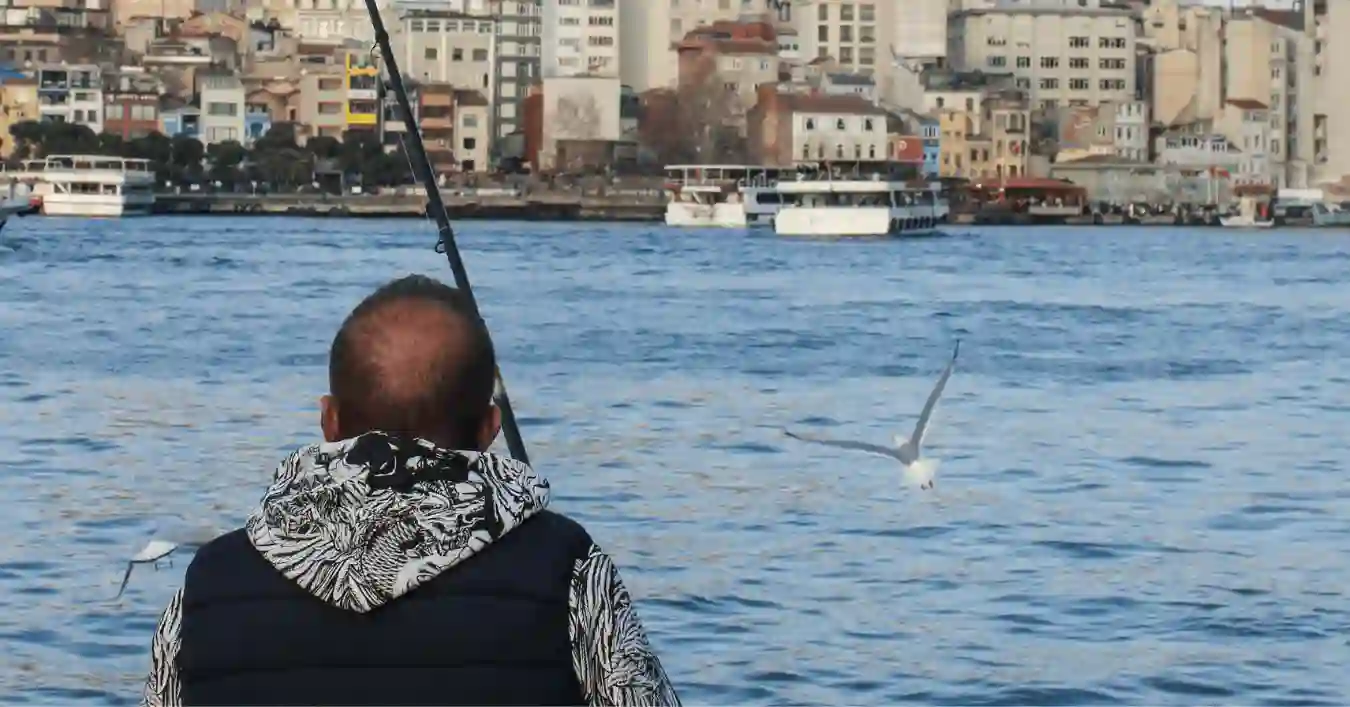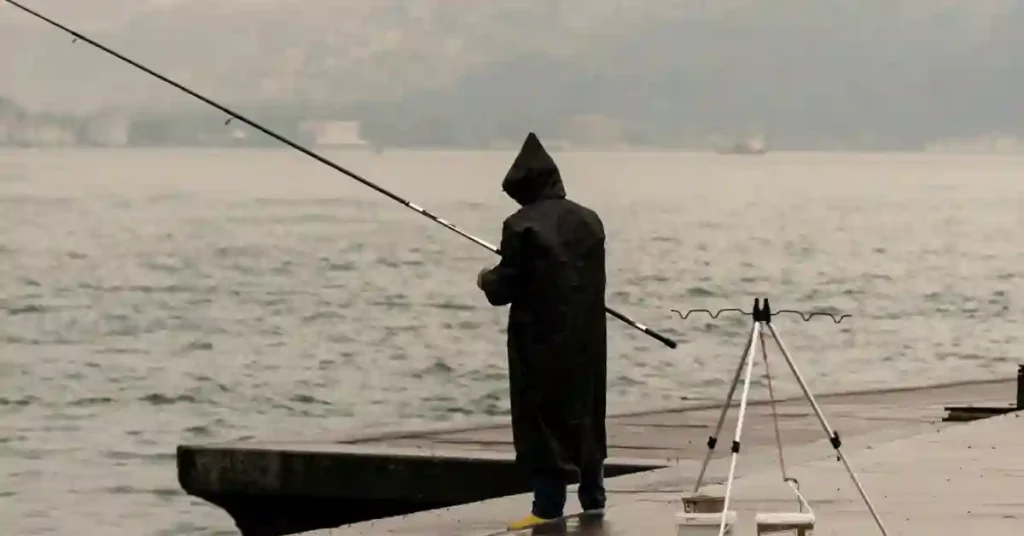How To Set Up A Spincast Reel for Trout Fishing | 6 Easy Steps
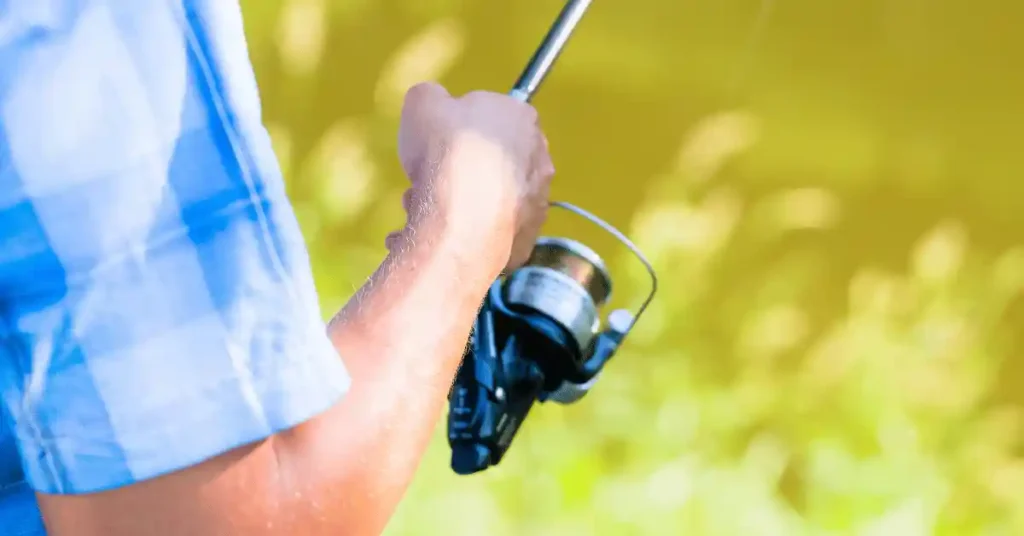
Do you need help setting up a spin cast reel? Also, you don’t know how to put a line? It will be a disaster for you because you can’t fish without it. But don’t worry!
We have got you all covered. Because you’ve found a helpful guide to teach you about your spinning gear. Even though it might seem tricky initially, using the spinning rod and reel will improve your fishing skills and let you catch different types of fish.
Even if you’re new to casting spincast reels and need to learn more about them, don’t sweat, this guide is made for you. Read below to learn how to set up a spin cast real in easy step-by-step guide.
What is a Spincast Reel?
A spin cast reel is a fishing reel with a closed housing for the line and release mechanism. This makes it great for beginners in fishing because the fast design prevents the line from getting tangled and reduces the chance of problems like bird’s nests.
Also, spin cast reels are often cheaper than others, making them budget-friendly for many anglers. Spincast reels offer a different option compared to traditional spinning and baitcasting reels.

This type of fishing reel has a fixed spool that holds the line, eliminating the need for rotation when casting or reeling in, making it easier to use than other options on the market.
Since they were introduced, spin cast reels have been popular for kids and those new to fishing. The easy-to-use design helps beginners quickly learn casting techniques.
At the same time, experienced anglers often use them when targeting panfish species because of advanced features that offer more control than other models.
How a Spincast Reel Works
Before you learn how to set up a spincast reel, it’s essential to understand how it operates.
Traditional spinning reels are needed when casting a line from a spin cast reel. However, that’s not the case; all you need is gravity!
A hole at the front of the spool allows some fishing line to feed through and onto your rod. This line is then cast off over great distances due to the weighty lure companion.
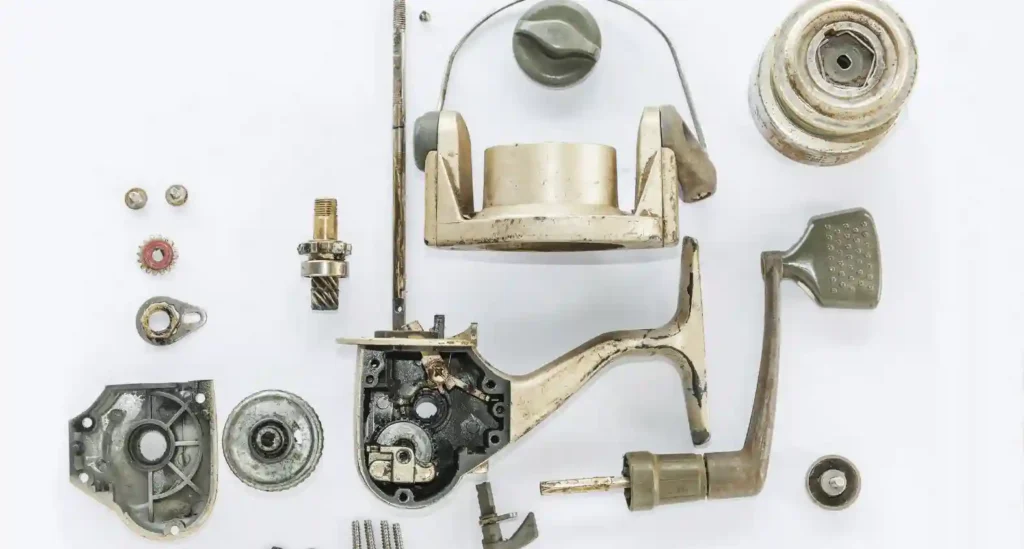
Even better, once you reach the maximum length and contact the water’s surface, the force known as gravity stops, automatically preventing any more line release. It ensures efficient and safe casting every time!
Spincast reels offer several advantages, such as effortless casting and improved accuracy. At the core of these features are three essential components: no backlash, tangling, or spinning out of control.
To understand how spin cast tools function better, learning about some additional parts that make them effective fishing companions is helpful.
1. Take-Up Pins
Take control of your fishing line with take-up pins essential for smooth casting and retraction. Opt for multiple pin options for the best results. Press the thumb button or pull the lever (model-dependent) for efficient operation.
2. Drag Systems
Reel in your catch effortlessly with either an external star drag or an internal control wheel. Outer star drags are visible and quick to set up, while internal systems offer discreet adjustments without disrupting your play.
3. Gear Ratio
Choose the correct gear ratio for successful fishing. Lower ratios increase torque and slower retrieval, while higher ratios offer faster retrieval with less overall strength. Select a reel that aligns with your desired performance without sacrificing finesse or quality.
How to Cast a Spincast Reel
Mastering the cast with a spincast reel can be tricky, but it’s essential for successful trout fishing setups.
Here are steps on how to set up a spincast reel:
Step 1: Gather all Equipment: Prepare your fishing gear, including the spin cast reel, rod, and right fishing line.
Step 2: Attach the Reel to the Rod: Slide the foot of the reel into the reel seat located on the underside of the rod. Tighten the reel seat by turning the locking ring clockwise until snug.
Step 3: String the Reel: Pass the fishing line through the hole in the reel’s front cover. Then, secure the line to the spool with an arbor knot or a similar knot.
Step 4: Close the Cover: Close the front cover of the reel by pressing down until it clicks into place. Ensure the line is properly fed through the hole in the cover.
Step 5: Adjust the Drag: Turn the drag adjustment knob to set the desired resistance on the spool. This will control the amount of pressure needed to pull line from the reel.
Step 6: Test the Reel: Pull some line off the spool to ensure it comes out smoothly. Make any necessary adjustments to the drag or line tension.
How to put a line on a spin cast reel?
To put a line on a spincast reel, follow these steps:
- Remove the nose cone by turning it clockwise about an eighth of a turn. It exposes the spool.
- Run the new line through the first guide of your fishing rod and the front cone of the reel.
- Start tying the line to the reel by making a simple overhand knot, then tie another overhand knot.
- Once the line is attached, screw the front cone back on, ensuring to keep the line tight.
- Wind the line onto the reel by cranking it around 40 or 50 times.
- Unscrew the front cone again to check the amount of line. Ideally, about an eighth of an inch of the inside of the reel is still visible.
Choosing the Right Line and Lure
Selecting the appropriate line and lure is vital in setting up your tackle for successful trout fishing with a spincast reel.
A successful casting technique depends on finding the right balance between the line weight and the lure size you’re using.
Spincast Line
Choosing a line that suits your environment, the type of fish you’re targeting, and your rod action is crucial. Lighter lines offer increased casting distance but may be more prone to breakage due to higher tension levels.
On the other hand, heavier lines provide better control but can significantly reduce casting distances.
This is a helpful site trails.com that explain the common types of fishing line.
Trout Fishing – Lure Selection
Knowing which lures work best for trout is crucial since they come in various sizes, shapes, colors, and materials. Smaller soft plastics or crankbaits tend to yield great results when targeting trout.
Additionally, larger spinners and wet flies can be practical if the conditions permit.
Lure Selection & Casting Technique
When experimenting with new lures, please pay close attention to how they are cast during practice sessions before venturing into open water. Ensuring your lure is properly balanced within your chosen setup is essential.
Poorly balanced lures can lead to inaccurate casts, so adjust to achieve the best results.
Attach The Reel To The Rod
Let’s understand how to attach a spincast reel to your fishing rod. If you’ve ever wondered how to do it, this section is here to guide you. Rigging up a spin cast reel might seem tricky at first, but it becomes a straightforward task with the right advice.
The key lies in understanding how to attach the spin cast reel to your fishing rod. Here’s a step-by-step guide:
- Alignment: Align the foot of the reel with the butt end of the fishing rod. Use an adjustable wrench or screwdriver (depending on your model’s screws) to tightly secure them together. Before tightening any bolts, ensure that all parts are correctly aligned.
- Component Positioning: Check that all components, including line guides and eyelets, are in their correct positions. Proper alignment ensures accurate and efficient casting. Incorrect positioning may result in casting issues.
- Secure Placement: Once everything is aligned, secure all components firmly in place. Double-check to ensure there are no gaps between them. It provides a solid and reliable connection.
- Thread the Line: Run a quality fishing line through each guide until it reaches the tip-top. Be cautious to prevent any tangling along the way. This step ensures that your line is appropriately set up for trout fishing.
Troubleshooting Techniques
Once you’ve mastered the art of casting in trout fishing, encountering common spincast reel problems can be frustrating. But fear not! With some basic troubleshooting techniques, you can quickly learn how to fix any spincast reel issue that arises.
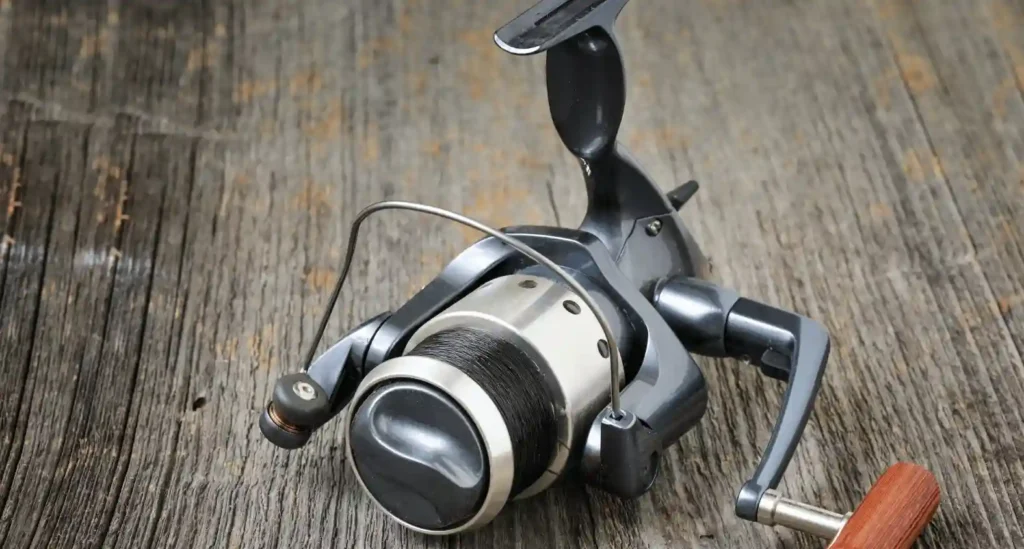
If you’re having trouble casting or retracting line from your spincast reel, the issue may lie with the amount of line on the reel or the tension knob setting.
Also, your drag system needs adjustment due to wear and tear over time. To solve these issues, start by checking for signs of damage, such as frayed lines or worn-out parts.
Once everything looks good visually, try resetting the tension knob and securing any loose pieces before testing it in shallow waters.
If all else fails, inspect the mechanism of your spincast reel for malfunctions. It involves disassembling each component one by one until you identify the exact problem.
With patience and attention to detail, this troubleshooting process should help identify necessary fixes, allowing you to get back to catching those big ones!
Final Words
Setting up a spincast reel for trout fishing isn’t too hard if you know what to do. With some knowledge and practice, you can use these reels well. I’ve noticed that most people who use spincast reels catch more trout than those who don’t.
This shows how important it is to set up your gear when fishing for your favorite fish.
Choose the right fishing line and bait, correctly attach the reel to the rod, and learn how to cast well. Following these steps will make you a skilled trout fisherman quickly! You can Also you fish emerger for trout.
If you need help setting up or casting with your spincast reel, you can find helpful tips online or ask at a tackle shop to get back to fishing quickly.

Meet Ibrahim Khan, an avid angler and author in Fishing Teach. He shares his wealth of knowledge from his 16 years of experiences in fishing. His articles are a captivating blend of practical insights and thrilling tales that invite readers into the enchanting world of fishing.
Ibrahim’s guides are your go-to guide in the realm of fishing on this informational site. Hailing from a coastal paradise, Ibrahim’s passion for angling is the heartbeat of his life.






